Activity
Explore Abstract Nature & Complementary Colors
A mixture of botany, exploration, Abstract Art and Pop Art color theory—this exercise never gets dull! Your child will start outside gathering drawings on his very own expedition and afterward recreate them as abstract shapes. The result will be a vivid eye-popping picture inspired by nature.
What You Need:
- Pencils
- Drawing board
- White paper
- Watercolor paper
- Oil Pastels
What You Do:
Part One - The Botanical Expedition
- Discuss with your child how scientists make field study or botanical drawings of things found in nature. Share some examples of sketches that you can find on the Internet.
- Give your child a pencil, sheets of paper and a drawing board, or a sketch book with a hard back, and send him outside to hunt for a natural object to draw. Leaves or flowers are the easiest to work with because they don't move. Encourage him to make his sketches larger than life on his paper. He should sketch the same object from three different angles on one piece of paper.
- Ask him to choose his favorite sketch and draw a rectangle around part of it creating a composition. Encourage him to crop the drawing creating an abstract composition that includes interesting lines or shapes.
Part Two - Abstract Shapes/Complementary Colors
- Discuss the three pairs of complementary colors in color theory: blue/orange, violet/yellow and green/red. Artists use these color combinations to create artwork that is bright and vivid, such as Pop Art. This is a good opportunity to introduce the work of Andy Warhol to your child.
- Ask your child to choose a pair of complementary colors that he would like to work with.
- Help him transfer his rectangular-cropped field drawing onto the rectangular white watercolor paper using a pencil. Pay close attention to where lines begin, end and intersect on the paper in comparison to the sketch. The end result will be a very large version of his cropped sketch. It will appear abstract and may not resemble the object he initially drew.
- He should then assign one color to the positive space, or the actual image he drew, and one to the negative space, or the background.
- Have him color in all of the areas, allowing the white of the paper to remain as the veins of leaves or intricate details. Oil pastels will need some elbow grease (heavy pressure) to get rid of all the little white spots on the paper.
- Now you're ready to frame and hang up a beautiful abstract oil pastel picture inspired by nature!
Related learning resources

Yellow and Violet: Complementary Colors!
Worksheet
Yellow and Violet: Complementary Colors!
Gilly and Philly are fantastic fish, here to help you learn complementary colors! Help your child color them with a complementary combo of yellow and violet.
1st Grade
Worksheet
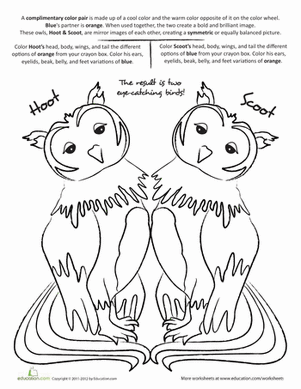
Orange and Blue: Complementary Colors!
Worksheet
Orange and Blue: Complementary Colors!
Practicing using complementary colors, like orange and blue, is a great way for your child to understand what it takes to create a truly dynamic composition!
1st Grade
Worksheet
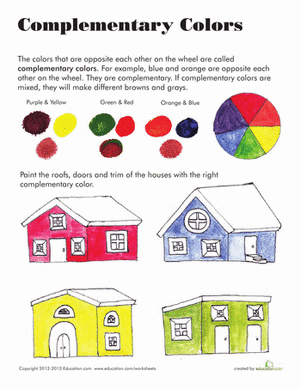
Complementary Colors
Worksheet
Complementary Colors
Even colors have best friends. In the world of color, these best friend pairings are called complimentary colors.
3rd Grade
Science
Worksheet

Complementary Angles
Interactive Worksheet
Complementary Angles
Get to know your complementary angles with this helpful practice sheet! Remember, complementary angles add up to make 90 degrees.
4th Grade
Math
Interactive Worksheet

Exploring Nature
Lesson plan
Exploring Nature
This movement-centered lesson will let your students explore parts of nature that make up our great Earth.
1st Grade
Lesson plan

Red and Green: Complimentary Colors!
Worksheet
Red and Green: Complimentary Colors!
Polly and Jolly are marvelous butterflies, here to help you learn about the complementary colors red and green!
2nd Grade
Worksheet
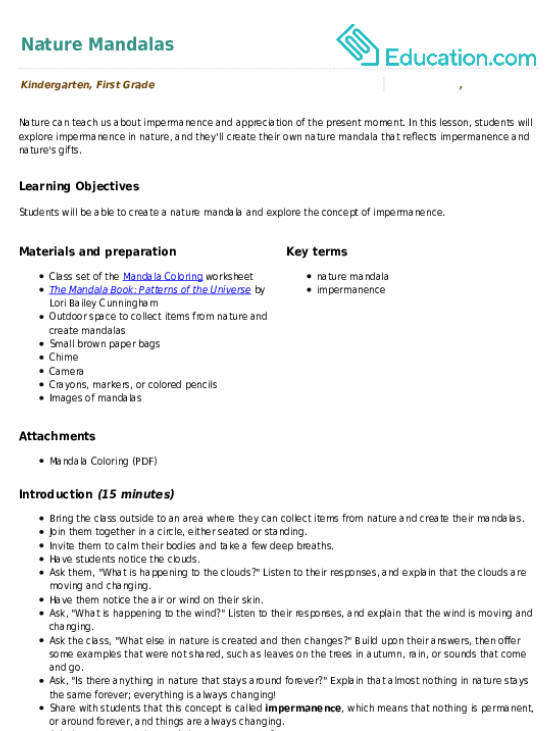
Nature Mandalas
Lesson plan
Nature Mandalas
In this lesson, students will explore impermanence in nature, and they'll create their own nature mandala that reflects impermanence and nature's gifts.
Kindergarten
Lesson plan
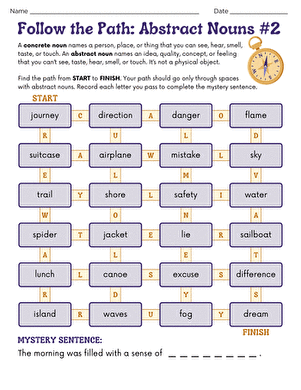
Follow the Path: Abstract Nouns #2
Interactive Worksheet
Follow the Path: Abstract Nouns #2
Explore the difference between abstract and concrete nouns with this engaging maze activity!
3rd Grade
Interactive Worksheet
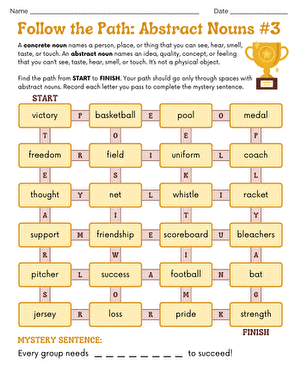
Follow the Path: Abstract Nouns #3
Interactive Worksheet
Follow the Path: Abstract Nouns #3
Explore the difference between abstract and concrete nouns with this engaging maze activity!
3rd Grade
Interactive Worksheet

Complementary and Supplementary Angles
Worksheet
Complementary and Supplementary Angles
Your student will learn the difference between complementary and supplementary angles.
4th Grade
Math
Worksheet
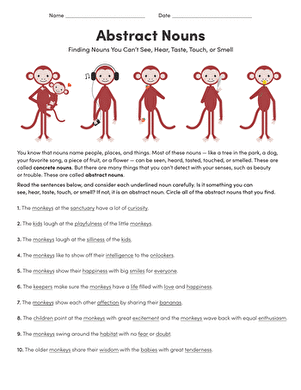
Abstract Nouns
Worksheet
Abstract Nouns
Children practice spotting and using abstract nouns in this four-page worksheet series.
3rd Grade
Worksheet

Identifying Abstract Nouns
Worksheet
Identifying Abstract Nouns
This grammar and mechanics worksheet helps students understand the difference between abstract and concrete nouns.
5th Grade
Worksheet



